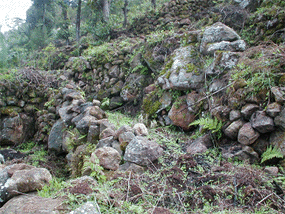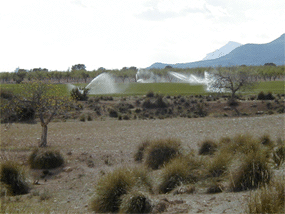Significance of Traditional Knowledge in Watershed Management
Constructed terraces of the Dorze people in South Ethiopia
Image Credit: Förch, G
Irrigation
Image Credit: Förch, G
Indigenous people lived often in harmony with the environment in many regions of the world; i.e. sustainable resource use. At the present however, degradation and destruction of natural resources in many places indicate that natural resource management cannot longer be regarded as sustainable. Either the traditional practices are not longer feasible under present conditions (e.g., fallowing due to land pressure as a result of population growth) or traditional knowledge might got lost (due to migration, for example) or measures applied are simply not sufficient [34].
Former development projects that tried to mitigate the hazard degradation processes often failed. This can be attributed to their ‘top-down’-approach applied in planning and implementing of resource management activities (see also rational planning in chapter planning models). The ‘transfer-of-technology’ approach
The measures often were badly constructed and maintained in consequence of lacking acceptance within the society. Badly constructed and maintained measures however, can more than ever advance degradation processes [36].
Gradually, it was recognised that those projects involving traditional knowledge has succeeded. Thus, development organisations demand for further research in traditional knowledge. Many ascertained that
- traditional knowledge can make an important contribution to the analyse of the environmental conditions within the respective region and
- it can be build upon the traditional practises [36].
The involved population is motivated together with external experts to carry out conservational activities. Hence, the involvement of traditional knowledge in Watershed Management is imperatively required. The traditional practices has to be analysed regarding their effectiveness under today’s circumstances and it has to be build on the suitable ones by development of these with modern knowledge according to local conditions or by supplementing with modern techniques. This combination of traditional knowledge and modern techniques is one of the core principals of Watershed Management (see figure). The involvement of local people from the project start is therefore necessary – a topic taken up in the next sub-chapter ‘soil and water conservation’.




